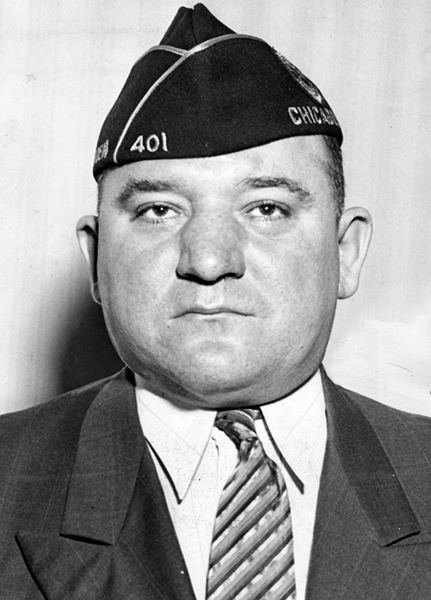Name Edward Younger | ||
 | ||
Died August 6, 1942, Chicago, Illinois, United States | ||
Edward F. Younger (c. 1898 – August 6, 1942) was the American United States Army soldier selected to choose the body to become America's Unknown Soldier representing all of those who were lost by the United States during World War I.

Edward Younger died of a heart attack in Chicago, Illinois, on August 6, 1942.
He was a long time employee of the Post Office in Chicago and was 44 years old.
National officers of the American Legion and Veterans of Foreign Wars accompanied the coffin to the cemetery.
Younger enlisted in the Army in February 1917 and took part, as an Infantry Sergeant, in major engagements, including at Chateau-Thierry, St. Mihiel, the Somme Offensive and the Meuse-Argonne Offensive.
He was wounded twice then re-enlisted in 1919 and was stationed with the 15th Infantry, Army of Occupation, Mayen, Germany, when Washington officials named him as one of six soldiers to go to France to select the Unknown Soldier.
On Memorial Day 1921, four unknowns (U.S. soldiers killed in combat who were not identifiable) were exhumed from four World War I American cemeteries in France.
U.S. Army sergeant Edward F. Younger, who had been wounded twice in combat, receiving the Purple Heart, and highly decorated for valor having received the Distinguished Service Cross during the First World War, selected the Unknown Soldier of World War I from four identical caskets at the City Hall in Châlons-en-Champagne, France, on October 24, 1921.
Sgt. Younger selected the unknown by placing a spray of white roses on one of the caskets. He chose the third casket from the left. The chosen unknown soldier was transported to the United States aboard USS Olympia. The other remains were interred in the Meuse Argonne Cemetery, France.
For many years Younger spoke publicly about the event. In his own words, as he told the story to civic and veterans groups, in an average of one a week from the time, this is what happened:
"At first it was an idea that we (the six soldiers) were to be just pallbearers, but when we lined up in the little makeshift chapel, Major Harbold, the officer in charge of grave registrations, told us, 'One of you men is to be given the honor of selecting the body of the Unknown Soldier.' He had a large bouquet of pink and white roses in his arms. He finally handed the roses to me. I was left alone in the chapel. There were four coffins, all unnamed and unmarked. The one that I placed the roses on was the one brought home and placed in the national shrine. I walked around the coffins three times, then suddenly I stopped. What caused me to stop, I don't know, it was as though something had pulled me. I placed the roses on the coffin in front of me. I can still remember the awed feeling that I had, standing there alone."
Younger, who was from Chicago, Illinois, completed his service with the Army in 1922 then began working for the U.S. Postal Service.
He was interred in Section 18 of Arlington National Cemetery beside his wife, Agnes Anna Younger.
